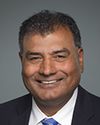There are guidelines or instructions—program instructions, I think they're called—that are provided and updated on a regular basis, so we could look and see, particularly on the medical admissibility side, when those were last updated.
Visa officers look to apply the act and the regulations as they are written and as they have been interpreted by the courts, and we provide guidance to them to say, “Here's a recent court decision, and we need to modify our behaviour and do this and this instead.” For example, when the Supreme Court of Canada made a very important decision in 2005 in a case called Hilewitz and De Jong, we modified the way in which we did medical admissibility screening at that point. The instructions were provided to officers and training was provided, etc.
The visa officer, then, is looking at the mitigation plan that's been presented and at humanitarian and compassionate considerations, so there are those areas of flexibility.



